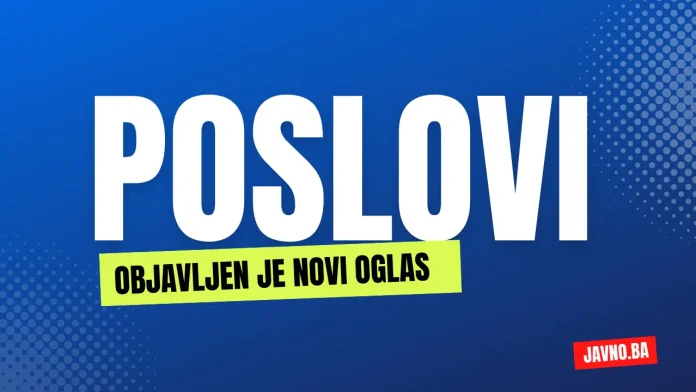Background information/context:
Save the Children believes every child deserves a future. In Northwest Balkans and around the world, we work daily to give children a healthy start in life, the opportunity to learn, and protection from harm. When crisis strikes, and children are most vulnerable, we are always among the first to respond and the last to leave. We ensure children’s unique needs are met, and their voices are heard. We deliver lasting results for millions of children, including those hardest to reach. We do whatever it takes for children – every day and in times of crisis – to transform their lives and the future we share. Save the Children in North-West Balkans (SCNWB), based in Sarajevo, Bosnia and Herzegovina, conducts its activities in three countries: Bosnia and Herzegovina, the Republic of Serbia, and the Republic of Montenegro, and supports the realization of regional initiatives in Southeast Europe.
Purpose of the consultancy:School Safety Context Analysis (SSCA) is intended to be used as a factual starting point for programmatic interventions, providing a baseline to identify existing gaps and define institutional policies, action plans, or protocols that require development or strengthening in the domain of the protection of children from violence and other hazards in and around schools, thereby helping SCNWB to establish specific project targets and identify strengths, weaknesses, opportunities, and threats.SSCA will serve as a base for the implementation of the project
THRIVE – Targeting Hazards and Reducing Incidents of Violence in Education, through which SCNWB intends to advocate and support the education system to effectively improve safety and promote the prevention of violence and other hazards in and around schools.
Scope of work: ·
Analysing existing institutional policies, action plans, standard operating procedures and protocols in target locations related to the protection of children from violence and other hazards in and around schools;· Mapping and consulting relevant stakeholders in all domains of school safety;·
Identifying the most critical improvement areas and provide recommendations for SCNWB programming in this domain.
Targeted hazards: All applicable hazards in the three major categories below should be covered throughout this Analysis:
Natural & Environmental060-HAZICONS-Natural-00V01.png
WATER & WIND: flood, windstorm
EARTH: earthquake, landslide,
FIRE: structural fire, wildfire
TEMPERATURE: extreme cold, extreme heat
Conflict & violence060-HAZICONS-Conflict-00V00.png
Sexual Violence: any form of sexual violence against children (ex. forced sex, harassment, exploitation, etc.) regardless of perpetrator type occurring in and around school contexts
Physical Violence: any form of physical violence against children regardless of perpetrator type occurring in and around school contexts
Emotional Violence: any form of emotional violence against children regardless of perpetrator type occurring in and around school contexts
Neglect: any form of neglect against children, regardless of perpetrator type occurring in and around school contexts
PHYSICAL & HUMILIATING PUNISHMENT: the use of physical and humiliating punishment against children by teachers or other adults occurring in and around school contexts
BULLYING: the occurrence of bullying against children by peers in and around school contexts
VIOLENT ATTACK: Conflict-related attacks on schools, military use of schools, violent intruder(s) onto school premises, armed attacks on schools, abduction, trafficking or child recruitment in and around school contexts
Other 060-HAZICONS-Technological-00V00.png
060-HAZICONS-Technological-00V00.png
HEALTH: air pollution
OTHER: school playground accident
Geographical areas targeted:The geographical area to be covered through the SSCA is the level of cantons selected for the project in FBiH, namely Herzegovina-Neretva Canton, Bosnian-Podrinje Canton, Una-Sana Canton and Tuzla Canton (specifically schools in town Lukavac).
Methodology:The contractor should employ a mixed-methods design, endeavoring to cross-validate gathered data and capture different dimensions of the analysis and triangulating data among the following data sources:
Document collection and desk review: Thorough data collection includes collecting available data such as institutional strategies, protocols and action plans for the protection of children from violence, environmental and other hazards in and around schools; operating procedures in cases of violence and other hazards in and around schools, existing programs/training materials on the prevention of violence and other hazards in schools targeting teachers and/or students, school hazard, vulnerability, capacity and risk assessments, emergency and evacuation plans, disaster response plans, and any other emergency preparedness and mitigation documents related to violence, hazards, disasters and climate change adaptation. The next step is reviewing all relevant documentation.
Semi-structured interviews with individuals and/or small groups of key informants: Structured and semi-structured interviews of key informants with expert and local knowledge from the relevant education and child protection institutions (ministries at cantonal level), city administrations, security and civil protection institutions at cantonal level, related to school safety with a focus on violence and other hazards in and around schools are considered key sources of information for the purpose of this analysis.
Direct Observation: Observation remarks and conclusions from semi-structured interviews.
Deliverables:
1. Outline of the School Safety Context Analysis with a clear implementation schedule
2. Draft version of the School Safety Context Analysis with a focus on violence and other hazards in and around schools
3. Final version of the School Safety Context Analysis
Content of the report:
Save the Children expects that the final report will include the following sections, at a minimum:
1. Introductory Demographics & Socio-Political Context
2. Education Sector Overview
3. Hazards and Risks Overview
4. Violence Prevention and Response: Policies, Practices & Program
5. Comprehensive School Safety Overview with a focus on violence and other hazards in and around schools
6. Recommendations for key interventions needed to strengthen the response of the education systems and schools to violence against children and other risks and hazards that have impact on overall school safety.
Timeline 25 working days:
Estimated Commencement Date: 27 November 2023
Estimated End Date: 31 January 2024
Timeframe of delivering agreed Activities:Activities DaysTimeframe*
Comprehensive Document Collection and Desk Review as outlined in this TOR.227 November 2023 – 29 November 2023Developing data collection tools.229 November 2023 – 01 December 2023Collecting data, conducting interviews with individuals and/or small groups and organizing field visits.801 December 2023- 31 December 2023Analyzing the collected data, identifying findings and conclusions, and developing recommendations.601 January 2024- 17 January 2024Producing a draft report of SSCA. 317 January- 22 January 2024Submission to the SC of the draft report 22 JanuaryRevising the report as per the feedback received from SC, as needed.327 January- 29 January 2024Submitting the final report of SSCA.130 January 2024



